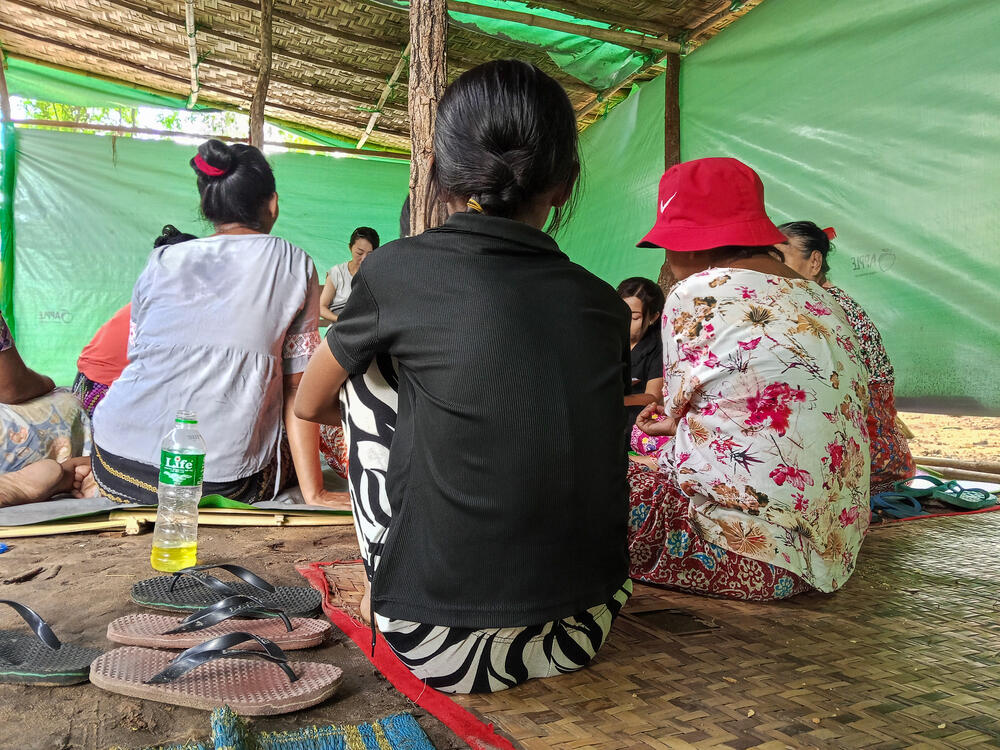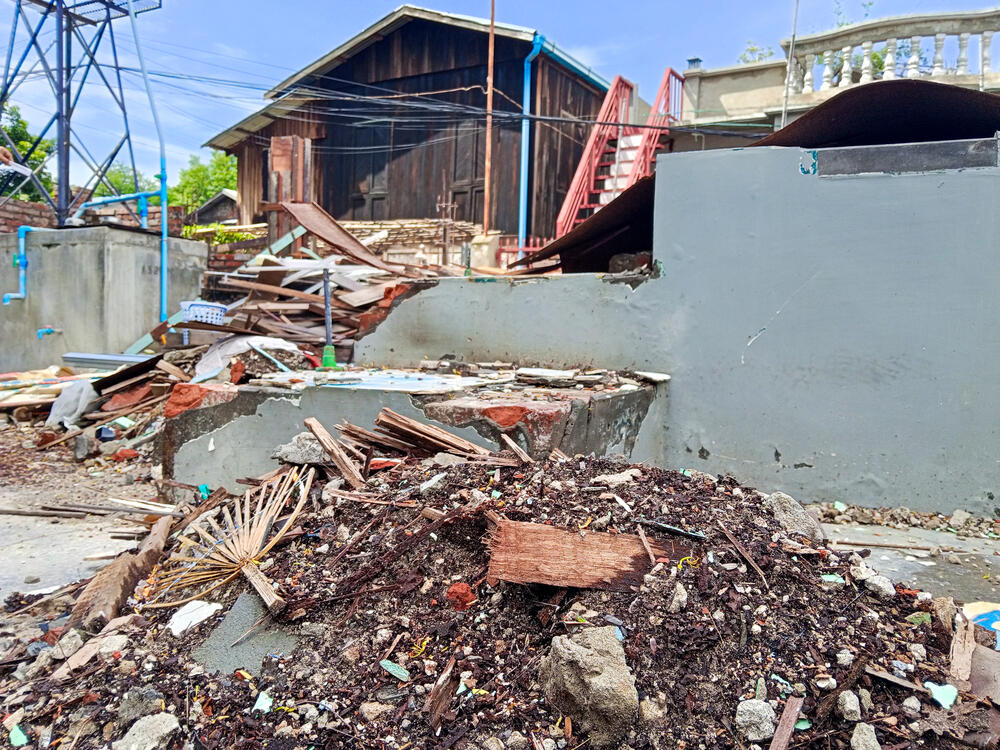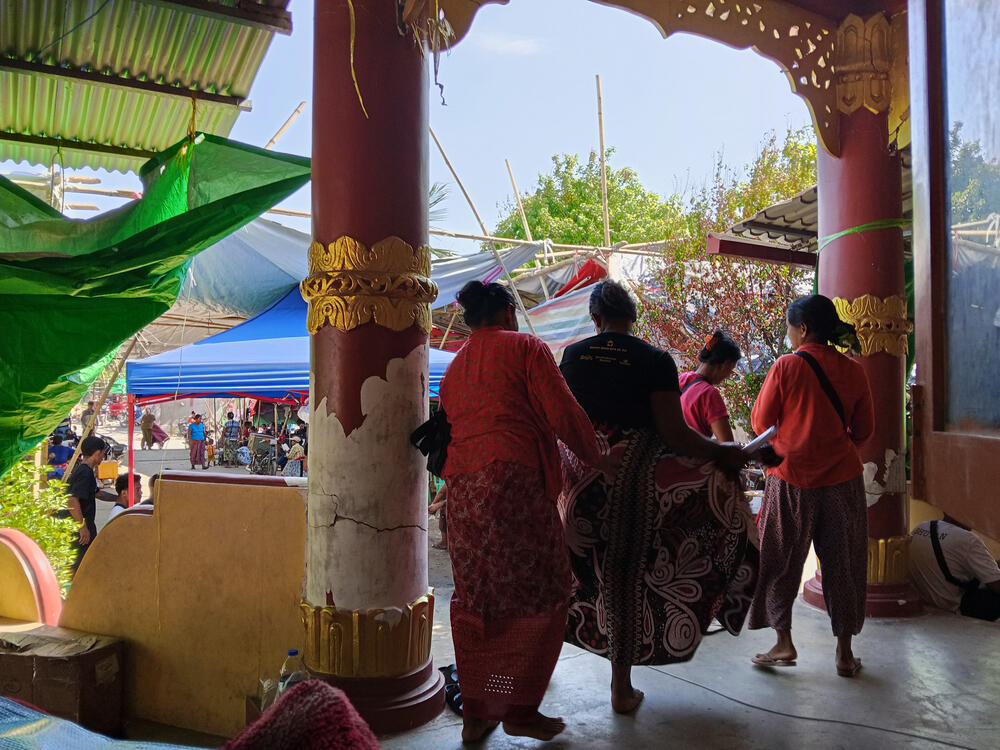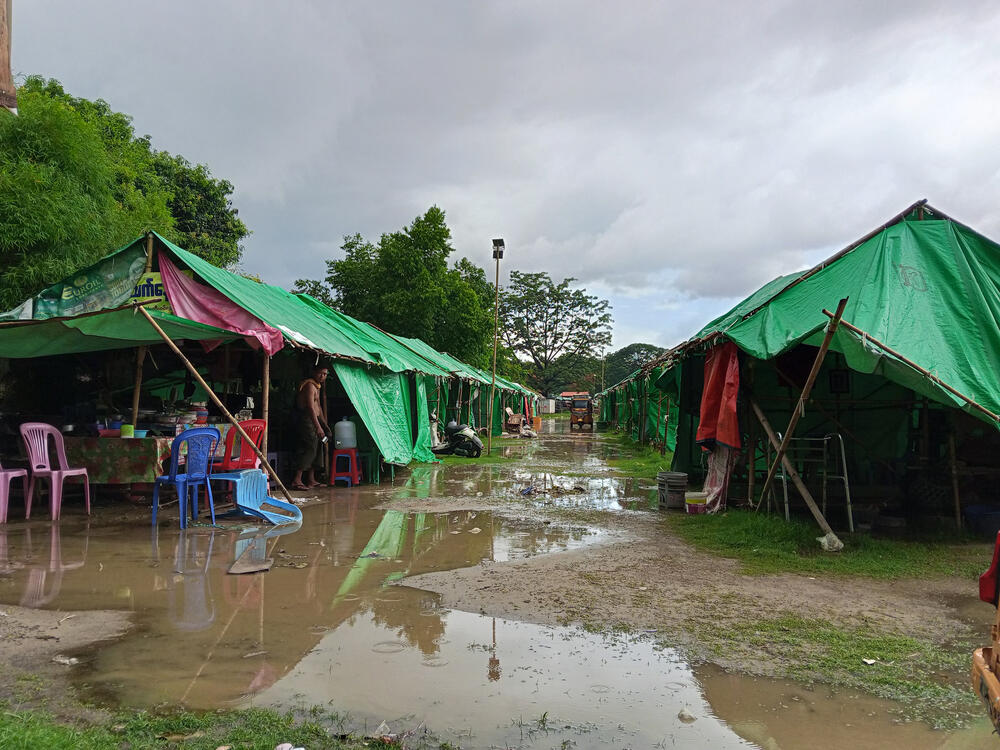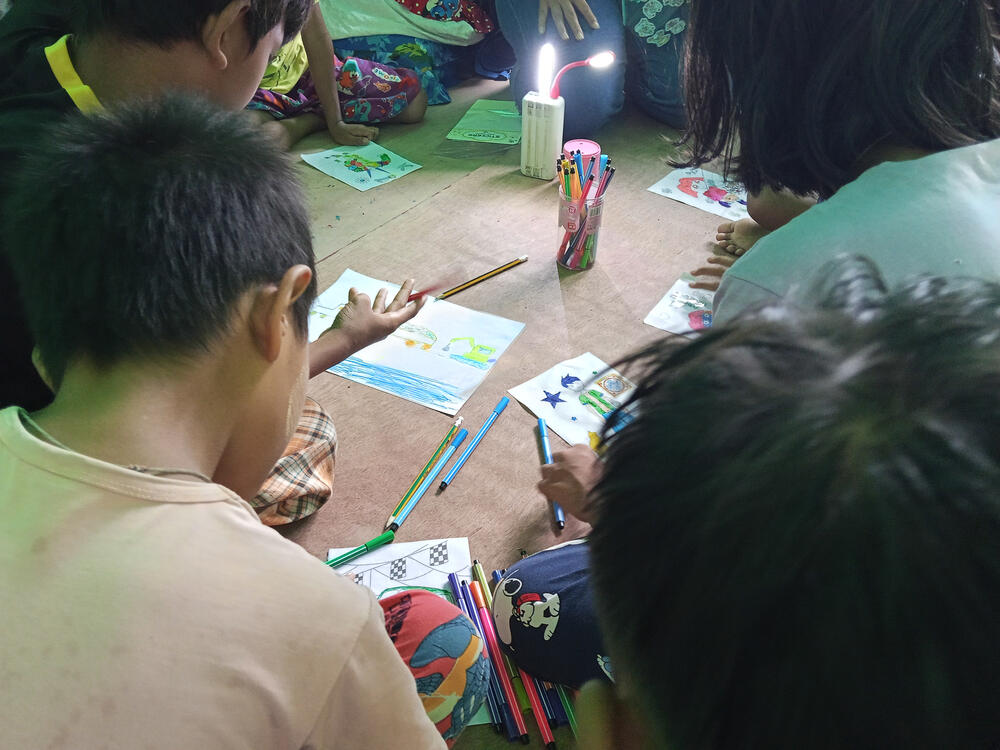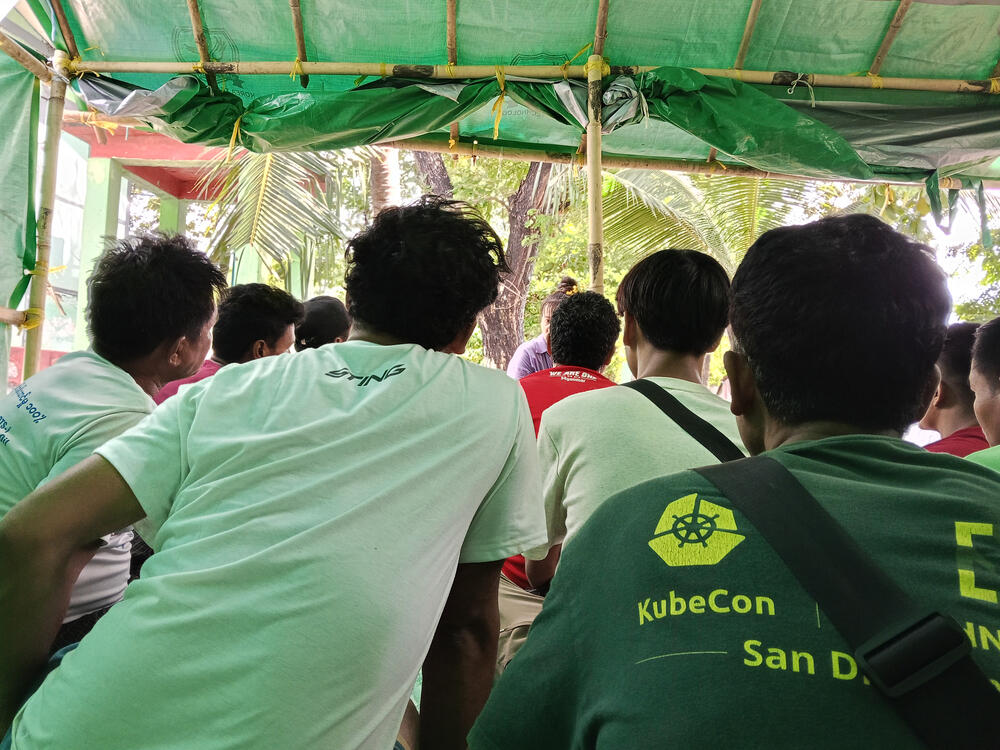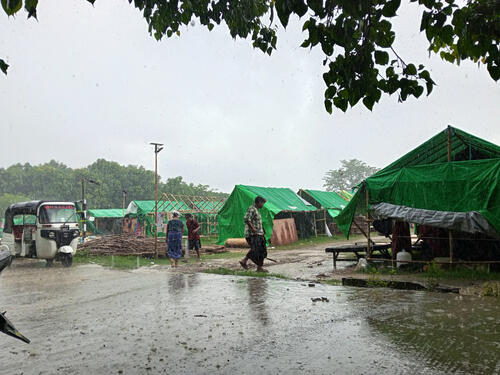Beyond the rubble: Mental health and psychosocial needs after Myanmar’s earthquake
10 July 2025
Two months on from the devastating earthquake in Myanmar, clean-up continues in Mandalay city. But beyond the rubble, mental health needs remain.
Ma Thiri* vividly remembers her life changing in an instant.
“People were shouting and screaming in panic, telling everyone to run out onto the streets. While everyone was shouting, I turned and looked back. The flames were already engulfing my house. There was no way I could go back and grab anything.”
A tailor, Ma Thiri, lost her home and livelihood during Myanmar’s 7.7 magnitude earthquake on March 28. Her neighbourhood, built on the site of a landfill in Sein Pan, Mandalay city, was largely destroyed in a methane gas fire ignited by the earthquake. Now sheltering with her family on the grounds of the local monastery, the 30-year-old is uncertain about where they will live next, and whether she will be able to restart her small business. Despite her pressing anxieties, she tries to stay resilient.
“I am able to sleep. But when I feel deeply sad, I can't cry in front of my parents. I'm the one they rely on to provide for them, so if I show my pain, I fear it will make things worse for them. That’s why I have to keep myself strong,” she explains with emotion.
Clearance efforts are well underway across Mandalay city, which was badly affected by the disaster. Salvaged materials are sorted into piles at damaged sites and construction workers continue long shifts. Community groups have helped restore a sense of normalcy after the earthquake, organising group donations and supplies in solidarity with those affected.
But for Ma Thiri and many of the families made homeless in Mandalay city, there are new challenges to confront. Two months on, homeless people coming to terms with the initial shock of the disaster are now living in shelters at sites around the city. Some are grieving for family members and friends who did not survive. Many are anxious for the immediate future, with practical concerns around housing, income, healthcare and education among common worries. Meanwhile, frequent aftershocks provide regular physical reminders of people’s recent distress and prompt fears of new earthquakes.
“I lost my home - the most important thing for a person, the belongings and property I’ve worked for."
"Everyone wants to live in their own home, their own space. Even though I am deeply saddened by what I've lost, I don't know how to express it in words,” says Ko Min Lwin*, a meat vendor and community volunteer who also lost his family home in the Sein Pan fire.
Mental health and psychosocial supports were limited in Myanmar even before the earthquake.
“Some people have now suffered three times; through conflict, displacement and the earthquake. And now, again, they must relocate. There is a lot of anxiety for them. But there is limited space to discuss these worries,” says Ko Hein*, a mental health counsellor.
Community groups and local volunteers have been crucial in helping affected people navigate these difficult moments. MSF mental health teams are supporting these efforts by providing as well as group recreational activities for children group mental health and psychosocial support sessions at several locations where people are sheltering across the city of Mandalay.
Challenging living conditions
After the earthquake, up to 350 families sheltered in tents at a camp in the village of Sinka, outside Mandalay city. While many have now returned to their own homes or to stay with relatives, around 30 to 40 families, including children and elderly people, remain living in difficult conditions next to the village football field, an area prone to flooding.
“My wife tried to reach (our seven-year-old daughter) during the shaking, but the tremors were so intense that she couldn’t get to her. Being alone during the quake frightened her deeply. Since then, she doesn’t want me out of her sight. She insists on sleeping between us at night,” says Ko Toe Myint*, a community member.
For those now living with their families in camps, regular routines have been disrupted and once familiar spaces, including homes, have often disappeared. In such living conditions, it can be difficult for families to maintain a sense of stability, vital for the mental wellbeing of children.
MSF’s group recreational activities for children living in temporary shelter are intended to help provide a space for fun and friendship, where they can enjoy moments of normality together. At one such session in a tent at the camp, children are quickly engrossed in drawing pictures together, looking up occasionally to sing and swap colouring pens as heavy rain falls outside.
“Children are one of the groups most influenced by their environment. They cannot choose where they live and where they grow up. It’s particularly important to create spaces and moments for them to enjoy life. It’s very therapeutic to be able to keep doing what they were doing before the disaster,” explains MSF Mental Health Activity Manager Kyoko Araki.
A space to process
Elsewhere, many families whose homes were damaged or destroyed were accommodated in temporary shelters around the city, including at football fields and on school grounds.
At an MSF group session on the grounds of a high school, women listen to and share self-care advice. They also discuss the challenges of life after the earthquake. With school classes soon restarting, most participants are unsure where their families will be staying in two weeks’ time. Despite this, there is much laughter and lively conversation. The session is a space for some degree of decompression and mutual support.
“We cannot change their living situation unfortunately. But psychologically speaking, these sessions provide an opportunity for people to discuss a topic that isn’t often spoken about publicly. It’s also important to take this time to process,” says Araki.
“Going forward, how people are treated after disasters like these can make a big difference for their future wellbeing. So psychosocial support can make a difference, especially the longer you commit to a community. This project is in an initial phase, but we hope to develop more activities depending on the needs of the communities also.”
For Ma Thiri, the response of the community and local organisations to the needs of her family and neighbours has been a source of reassurance. She hopes she and her family can quickly restore a degree of stability to their lives. “When community groups and organisations started showing up and providing support, I slowly began to regain some hope. The next step is to think ahead.”
*Names changed.
